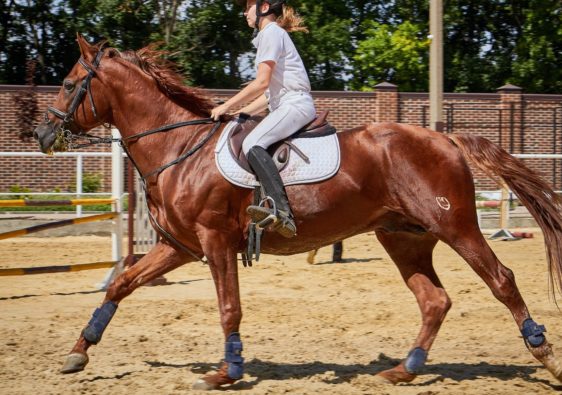Roughly 45 percent of a horse’s total body weight is muscle, responsible for powering locomotion and movement while distributing force and absorbing shock. When the weight of a rider, application of tack, and demands of training are factored in, an enormous amount of stress is placed on the biolocomotive systems, compromising the efficacy of muscular function.
The manual techniques utilized in massage help maintain the health of the muscle, better enabling it to perform at its best. In addition to the general “feel good” relief, massage therapy improves circulation of blood and lymph, which in turn hastens nutrient delivery and waste removal. Massage catalyzes replenishment of muscle glycogen (a necessary component for aerobic and anaerobic energy systems) which in turn hastens muscle recovery after a workout.
With rigorous exercise, the muscles undergo a cycle of damage and repair which strengthens and builds them up over time. Those tiny tears that occur in the muscle fibres, however, cause inflammation as the body works to repair them, making rest and reduction in work intensity crucial for recovery. Massage therapy can reduce both the time required for muscle repair as well as post-exercise muscle aches.
Studies on human athletes after strenuous activity revealed that massage reduces the production of cytokines, compounds which are linked to pain and inflammation, and instead promotes mitochondrial biogenesis. Those mitochondria inside the cells convert glucose into energy essential for cell repair and function.
Put simply: massage not only helps muscles heal themselves, but actually improves their health and overall performance.
While it can be common practice to resort to NSAIDS and anti-inflammatory drugs, those substances can actually slow down the healing process. It is beneficial, where possible, to at least combine massage therapy with drug therapy to aid the horse’s comfort and improve the healing process.
The Riding Horse
Horses can be notorious for hiding their pain, as it would reveal vulnerability that would typically prove fatal to prey animals. Instead, their discomforts can manifest in a variety of ways. Imbalances and tension while being ridden are just a start. Head-shaking, bucking, poor-bitting, flying back, baulking at saddling – even reactive or aggressive behaviour – are often linked to pain.
With massage, whether vibration, isolated pressure, or kneading and rolling techniques, spasms can be targeted and released. Stiff or contracted muscles are elongated, restored to their full length, and flexibility and range of motion is improved. When the muscles are able to contract and release freely without pain, overall performance and dexterity are improved, risk of injury is reduced, and an improved willingness to work is often the result.
If you’re curious for more, you can find further detailed reading about the benefits of massage in my article in Horse Sport: Empower Your Ride




